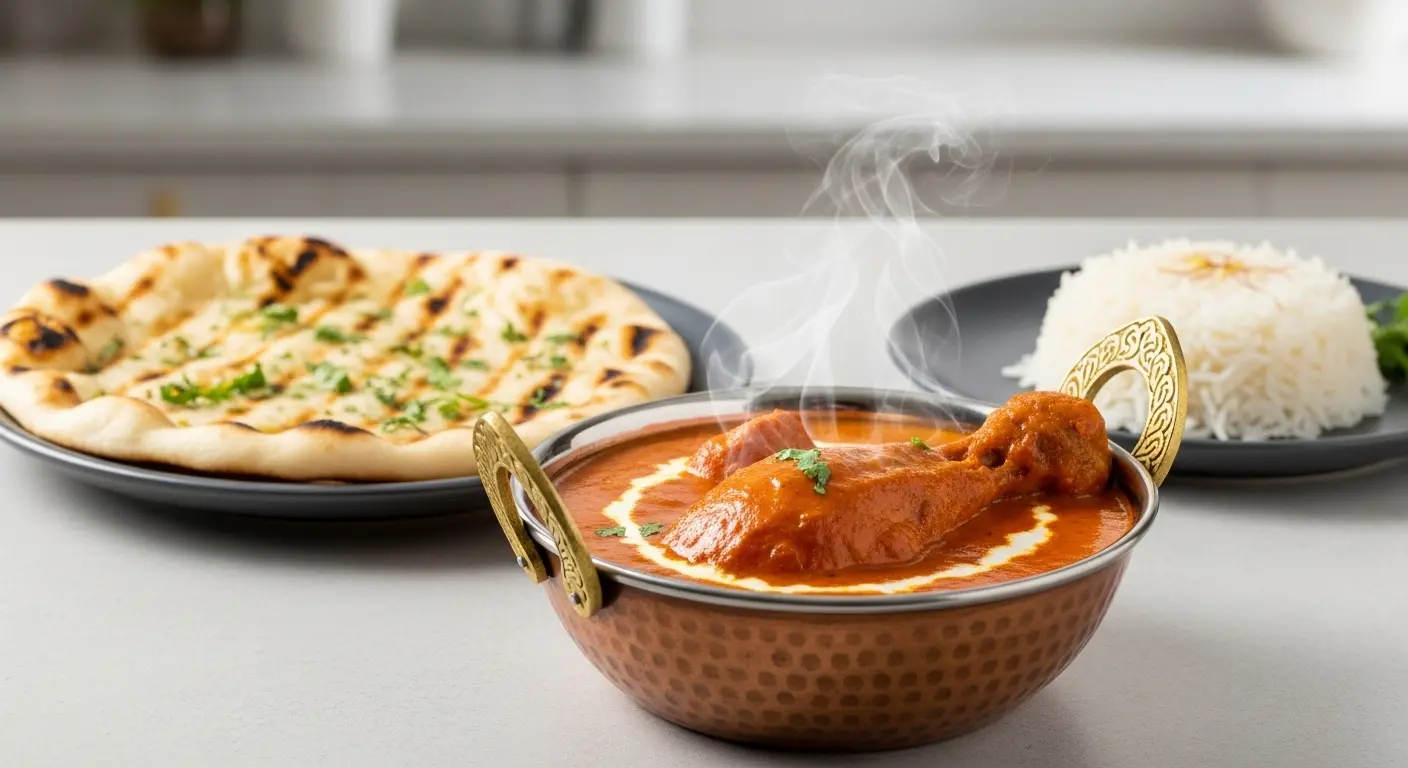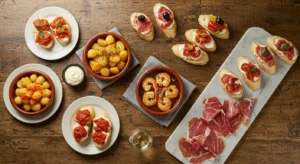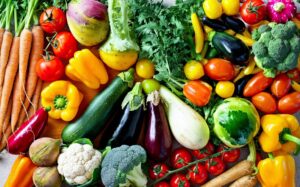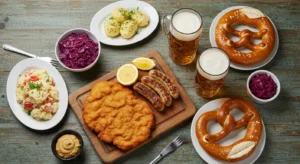Table of Contents
A Beginner’s Feast: Your Friendly Guide to the Vibrant World of Indian Food
Picture this: you’re sitting in a restaurant, the air thick with aromas you can’t quite pin down, earthy, smoky, floral, and a little bit spicy all at once. You glance at the menu, but the names feel like a secret code. Rogan Josh, Biryani, Chana Masala. It’s exciting, sure, but maybe a little intimidating, too. Where do you even begin?
If that sounds familiar, you’re in the right place. Indian food isn’t just a cuisine; it’s a conversation of flavors, a story told in spices. And honestly? It’s one of the most welcoming and diverse culinary journeys you can take. Forget any notion that it’s all about searing heat. The real magic lies in the harmony of spices.
So, let’s pull up a chair. This isn’t a formal lecture. Consider it a friendly chat, your personal guide to understanding and falling in love with Indian food, one delicious bite at a time.
First, Let’s Talk Flavor: It’s Not Just “Spicy”
This is the biggest misconception we need to clear up. When Indian cooks say “spicy,” they’re often referring to the use of spices, the building blocks of flavor, not just chili heat. The complex flavor profile of an Indian dish is usually a careful balance of six key elements:
- Sweet: Often from caramelized onions, a pinch of sugar, or certain vegetables.
- Sour: A splash of lemon juice, a dollop of yogurt, or a dash of tamarind paste.
- Salty: Simple salt, but also from ingredients like chaat masala.
- Bitter: Found in spices like fenugreek (methi) and turmeric, as well as certain greens.
- Pungent: The “kick” from garlic, ginger, and chilies.
- Astringent: A drying sensation you might get from legumes like lentils.
A perfect Indian dish aims to balance several of these flavors, creating a symphony in your mouth where no single note overpowers the others.
The Spice Rack of India: Your New Best Friends
You don’t need a cabinet full of 50 jars to start. A handful of core spices will open up a world of possibilities. Think of them as your foundational crew.
The Holy Trinity: Ginger, Garlic, and Onion
This trio forms the base, the sofrito or mirepoix of countless Indian dishes. They’re typically finely chopped or pounded into a paste and sautéed until golden, creating a deep, aromatic foundation.
The Essential Ground Spices
- Turmeric (Haldi): The golden child. It provides a warm, earthy flavor and that iconic yellow hue. It’s also a powerhouse of antioxidants.
- Coriander (Dhania): Don’t think of the leafy herb; the ground seeds are citrusy, sweet, and nutty. It’s a fantastic flavor balancer.
- Cumin (Jeera): Earthy, warm, and slightly smoky. You’ll find it both as whole seeds (for tempering) and ground.
- Red Chili Powder: This is where the heat comes in. The most common is Kashmiri red chili powder, which gives a vibrant color without overwhelming spice, perfect for beginners.
- Garam Masala: The name translates to “warm spice mix.” It’s a blend of spices like cardamom, cinnamon, cloves, and black pepper, usually added at the end of cooking to preserve its fragrant aroma.
The Whole Spices: The Aromatics
These are often sizzled in hot oil or ghee at the very beginning to infuse the cooking medium with their essence.
- Cumin Seeds (Jeera): They pop and release a nutty aroma.
- Black Mustard Seeds (Rai): They crackle and add a pungent kick.
- Cinnamon Stick (Dalchini): Provides a warm, woody sweetness.
- Green Cardamom Pods (Elaichi): Floral, citrusy, and incredibly fragrant. A true hallmark of Indian aromatics.
- Cloves (Laung): Intensely sweet and pungent, a little goes a long way.
A Culinary Tour of India: It’s Not One Monolith
India is a subcontinent with 28 states, each with its own geography, culture, and cuisine. The food in the north is dramatically different from the south.
- North Indian Cuisine: This is what many people outside India are most familiar with. It’s known for its creamy, tomato onion-based gravies, tandoori grilled meats, and breads like Naan and Roti. Think Butter Chicken and Dal Makhani. Dairy, like ghee (clarified butter), yogurt, and cream, is used generously.
- South Indian Cuisine: Lighter, often spicier, with a focus on rice, lentils, and coconut. You’ll find dishes like Dosa (fermented rice and lentil crepes), Idli (steamed cakes), and tangy soups like Rasam. Coconut oil and fresh coconut are staple ingredients.
- Coastal Cuisine: Both the western (e.g., Goa) and eastern (e.g., Bengal) coasts have incredible seafood. Goan food shows Portuguese influence with dishes like Fish Curry, while Bengali cuisine is famous for its delicate use of mustard oil and panch phoron (a five-spice blend).
- Street Food Culture: This is the soul of India. From Pani Puri (hollow, crispy shells filled with spicy tamarind water) to Pav Bhaji (a spiced vegetable mash with buttery buns), street food is an explosion of flavor, texture, and pure joy.
Your First Indian Food Order: A Handy Cheat Sheet
Walking into a restaurant? Here’s a beginner-friendly game plan.
For a Balanced, Mild Meal:
- Main: Butter Chicken (creamy, tomato-based, and mild) or Chicken Tikka Masala.
- Vegetarian Main: Paneer Butter Masala or Palak Paneer (soft cheese in a spinach gravy).
- Bread: A buttery Garlic Naan or a simple Roti to scoop up the gravy.
- Rice: A simple Basmati Rice or a more fragrant Jeera Rice.
- Starter: Vegetable Samosas (crispy, spiced potato-filled pastries).
Ready to Explore a Little Deeper?
- Try a Dal: Dal Tadka is a creamy lentil dish tempered with ghee and spices. It’s comfort in a bowl.
- Go for a Biryani: A fragrant, spiced rice dish layered with marinated meat or vegetables. It’s a celebration in itself.
- Taste the Coast: Goan Fish Curry is a beautiful, coconut-based dish that’s tangy and flavorful without being too hot.
Cooking at Home: Your First Indian Dish
Don’t be afraid to try cooking it yourself! A simple Chana Masala (spiced chickpea curry) is a fantastic starting point. It’s vegan, packed with protein, and incredibly forgiving. The process of “blooming” your spices in oil and building the gravy from the onion, garlic ginger base is a fundamental technique you’ll use again and again. For a reliable, tested recipe that walks you through each step, I often point beginners to the fantastic resource at Ministry of Curry. Their detailed instructions and photos are a great help for nailing that authentic taste.
Frequently Asked Questions (FAQs)
Q: I have a low tolerance for spice. Can I still enjoy Indian food?
A: Absolutely! Just communicate clearly. You can ask for a dish to be made “mild.” Dishes like Butter Chicken, Korma, and Malai Kofta are inherently mild and creamy. You can always ask for chilies or spicy chutneys on the side.
Q: What’s the difference between Curry Powder and Garam Masala?
A: “Curry powder” is a Western invention, a generic blend meant to mimic Indian flavors. In India, spices are usually blended fresh for each dish. Garam Masala is a specific, aromatic blend used as a finishing touch, while curry powder is often used as the main spice base in Western recipes.
Q: Is Indian food generally healthy?
A: The foundation of Indian home cooking is incredibly healthy. It relies on lentils, legumes, vegetables, yogurt, and a pharmacy of antioxidant-rich spices like turmeric. The health factor can change in restaurant settings where cream and ghee are used more liberally, so cooking at home gives you full control.
Q: What is that yellow rice called?
A: That’s usually Turmeric Rice or Peas Pulao. It gets its vibrant color from turmeric and is often studded with peas and whole spices. It’s a simple, fragrant side dish.
Q: Do I have to eat with my hands?
A: Not at all! While eating with your hands is traditional and many believe it enhances the sensory experience, it’s entirely a personal choice. Forks and spoons are perfectly acceptable and widely available.
The Final Sprinkle
Indian food, at its heart, is about abundance, warmth, and sharing. It’s okay to feel a little overwhelmed at first; that’s part of the adventure. Start with a familiar dish, maybe try one new spice at home, or ask your server for a recommendation.
The goal isn’t to become an expert overnight. It’s to find joy in the discovery, to savor the layers of flavor, and to share a meal that has been bringing people together for centuries. So, go on, take that first bite. Your taste buds will thank you.




